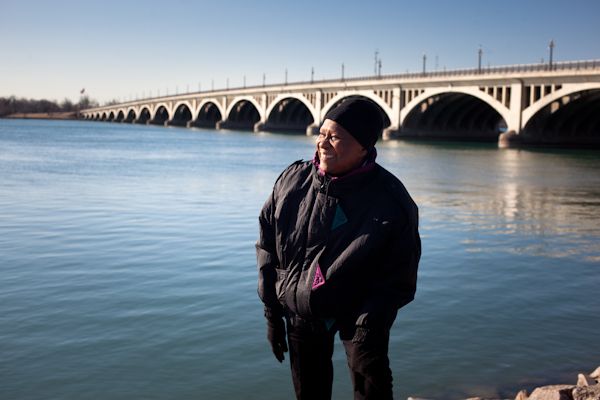 |
| Photo by Marvin Shaouni |
Consider Detroit, before it was Detroit.
Before the Emergency Financial Manager, before Kwame, before the Renaissance Center. Before cars and highways, black flight and white.
Before Hastings Street and suburban sprawl, Boblo, Deco, and Pingree's potato patches. Before dirt roads, ribbon farms, and enterprising New Frenchmen in birchbark canoes.
We can begin to know this distant, verdant place secondhand, through a letter written by Antoine de la Mothe Cadillac to Louis XIV in 1702, one year after French settlement.
Cadillac describes a river of "sweet water," linking "a lake which has been called St. Claire" and the Great Lakes, via the St. Lawrence River, to the Atlantic.
"This river or strait of the seas is scattered over," he writes, "...in its plains and on its banks, with large clusters of trees surrounded by charming meadows....On the banks and round about the clusters of timber there is an infinite number of fruit trees, chiefly plums and apples. They are so well laid out that they might be taken for orchards planted by the hand of a gardener."
Cadillac's letter contains a rich description of what sounds like another place entirely, an "earthly paradise of North America" abundant with things that grow (as well as crawl, hop, fly, swim, and slither). Looking back on what's happened here in the intervening 300 years, including the displacement of native peoples, the industrial revolution, and a turbulent period of post-industrial decline, it's hard not to think of Detroit as a kind of paradise lost.
But even today, after centuries of development and environmental degradation, traces of the original landscape remain. And some Detroiters find themselves drawn to these sites, where they can escape the pressures of daily life and commune with the natural world that once proliferated here without having to leave the city limits.
With Spring doing its thing all over the city, now is a good time to check in with some of these Detroiters and see what they have to teach us about the vital, nourishing relationships we can all build with the nature that's still here, hiding in plain sight.